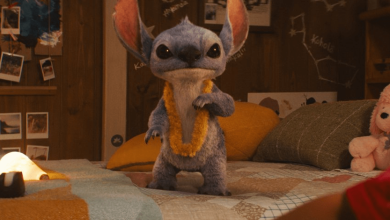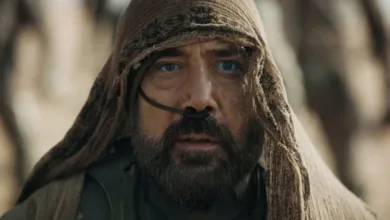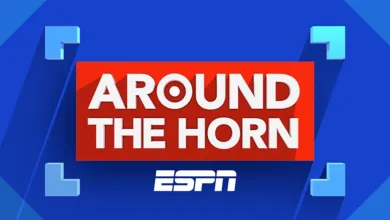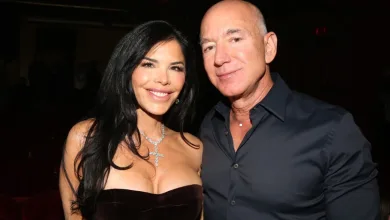Interview: Starve Acre Director Daniel Kokotajlo Discusses Making His Atmospheric Folk-Infused Horror Movie
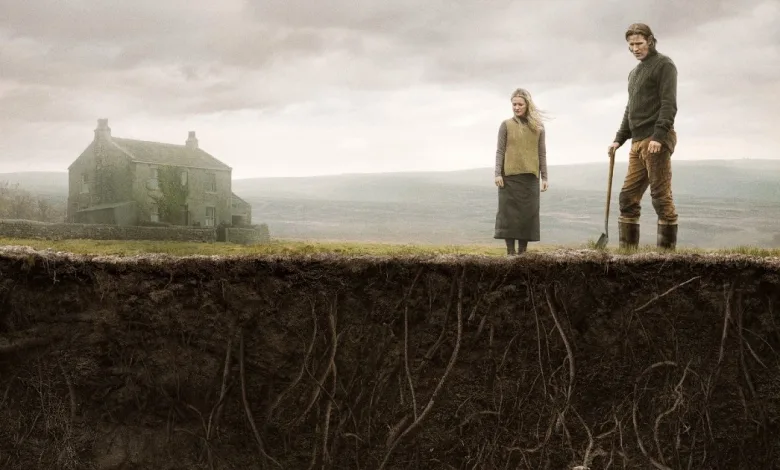
Daniel Kokotajlo, director of the Matt Smith & Morfydd Clark horror movie Starve Acre, discusses the film’s making.
Based on the novel by Andrew Michael Hurley, Starve Acre is a methodical, mournful tale of a couple dealing with a great tragedy. The farmland they live on provides a distraction, but something sinister and ancient lurks in the earth of the Yorkshire countryside.
ComingSoon’s Neil Bolt spoke to Daniel Kokotajlo about the resurgence of folk horror, handling an animatronic hare, and the use of religion in his work.
Neil Bolt: Thanks for speaking with me, Daniel. Starve Acre has been on my radar for a while now, and I am so pleased with what you’ve all done together. Did you come into Starve Acre with a love for folk horror?
Daniel Kokotajlo: Absolutely, yeah.Watched a lot of folk horror. I was also aware of Andrew’s previous books. I’m a big fan, not just of folk horror, but of strange, uncanny British storytelling, which I think Andrew’s part of.
His work reminded me of M.R. James. That kind of old way of storytelling. It’s kind of hard to define. There are gothic elements, there’s darkness, there’s horror, it’s uncanny. These days, it just gets called folk horror, which I find is a bit misleading at times because if it’s that, it should be about the land and nature, but it’s not always the case in these stories.
NB: Yes, definitely. I think that kind of horror and more traditional folk horror has enjoyed a resurgence in recent times, and the books are proof of that. And with films like Mark Jenkins’ Enys Men and, more recently, Chris Cronin’s The Moor. Do you think there’s a particular reason for renewed interest in the sub-genre, or is it just a natural cycle we’ve come round to?
DK: Yeah, it could be a bit of both. I think it’s a cycle. I think it’s about people being afraid of the future or about the state of the world in the present and wanting to look back on happier times. I think there’s a bit of that, looking back to try and figure out who we are and what we were. That’s what a lot of folk horror is about. The pagan ways, what were we like before Christianity took over? There’s this need or desire to want to find something there and hope that it’s comfortable or rose-tinted. But then you discover it’s darker and more disturbing than the present possibly.
That’s the thrill of it. That’s the horror element of it.
NB: That’s pretty spot on, yeah. You examined religion in your film Apostasy, particularly your relationship with it growing up among Jehovah’s Witnesses. While not directly the same, did that help inform your vision for Starve Acre?
DK: For sure! You know, this was dealing with the same subject in a way. It’s about grief and how people choose to deal with it. So certain things like religion, superstitions, and magic can be a comfort for you. But it stops the grieving process. It’s unnatural; it leaves you in a state of denial, and it does affect the psyche when it comes to acceptance and denial. So it’s the same story in a way, but less real.
NB: Something bigger, beyond that?
DK: Yeah. So I was ready for this. It is a preoccupation of mine: grief in storytelling and what religion does to it. So I was primed and ready!
And maybe actually that’s why there was a deviation from the story in the book for Starve Acre. They both learn to accept this situation, whereas in the book, there’s a kind of separation. I don’t know if you’ve read it?
NB: Yeah, it was part of why the film was on my radar!
DK: So Juliette is really accepting in the book, but Richard is kind of disconnected from her and looking down on her slightly. But for me, it was about a spiritual rebirth. It’s about springtime; it’s about love and how it can bring people together in strange and dark ways.
NB: Yes! Speaking of the book and changing things, You’ve adapted Starve Acre from Andrew Michael Hurley’s book. Adaptations always seem like a tricky endeavor, especially with books like this, where it’s so descriptive. How do you decide what will and won’t translate to the screen?
DK: That’s a good question. There are lots of different parts to that as well. I think trying to understand what the main thrust of the story was. That it was about springtime, that Andrew was tapping into something ancient about spring and the symbolism of the hare and what that’s emant in religion and folokore as well.
I guess it was about boiling down these elements. It’s about the hare really. The hare’s relationship to storytelling as well. And then also, I really appreciate the detail. The macro level of detail in the book, the descriptions of the inner workings of the animal and how they connected to the emotional lives of these characters as well. Like that was a rich juxtaposition that would work onscreen.
So, I felt that there were enough visual elements that would make it work and be a challenge. Also, do it justice because Andrew’s work, his prose, is beautiful and lyrical and really gets into the emotional lives of the characters. I had to find ways to do this on the screen. But because of this symbol of the hare, I felt like we had enough onscreen that it was okay.
NB: It’s the kind of writing where you read it and think, ‘’This would be amazing if it could be translated to the screen’’ but at the same time thinking, ‘’Christ, how would you do it?’’ It’s a thankless task, but i suppose it does show in the fact the film is a very visual piece You seem to trust the viewer with some ambiguity, which is a great thing where the occult is concerned. Where you want to feel like an outsider on the story don’t you think?
DK: Yeah. Also, a big part of it is the weather and the landscape. That’s a challenge for a production because there’s no way to control it! So I had to make myself available for that. So if there was a snowstorm or the rain came pouring down, we had to be able to adapt to that and capture as much of that on camera as possible. For capturing those moments of nature, they’re just things that happened. They’re happy accidents, and I had to be available for that. That’s what a lot of Andrew’s work is about, the description of that, as a symbol for what the characters are going through.
NB: Absolutely, and the characters, Matt Smith and Morfydd Clark are so effective in the film. They manage to convey so much about grief without saying a word and further the story with actions far more than words. I assume that was more a directive than it playing out that way because as we just talked about the visual nature of the story sort of makes that neccesary, I suppose?
DK: Yeah, I think so. Maybe that was part of my thinking and what I’d prepared for. I was taking what I’d done on Apostasy and channeling it into this, showing you the inner lives of these characters and their thought processes onscreen. So, a lot of that was talking to Matt and Morfydd in the moment to find out what they were thinking. Sometimes it was like a dissonance. They might have dual motives, two thoughts at the same time. It was probably driving them mad!
But there are lots of moments where you’re watching them think and feel, but they are really thinking specific things. They did a fantastic job of it, yeah.
And hopefully that adds to the tension and suspense of the film. The general kind of mood. That you can just see them and the difficulties that these characters are going through emotionally.
NB: I’d say that definitely translates, especially in those subtle things that they do to help them convey that. I suppose in rounding this out, i have to talk about the hare. The animatronic hare is superbly done. Was it always the plan to make the hare predominantly with practical effects work?
DK: Yeah, I think so. I think I always wanted it to come out of left field, you know? The story has moments where it shifts gear or transforms. There’s a sort of moment when Ms.Ford arrives that shifts it into a different kind of film. Then, with the animatronic, we do it again and move it off to another side. I loved this. I loved the strange, offbeat quality it brought to it. Again, it was another one of these pastiches. It is an ode to a technique of the past, and it is not about being afraid of it but about embracing it.
So, it wasn’t exactly always the plan. When I first read the book, I instantly thought of Alice, the 1988 Švankmajer film, so I wanted to do it in stop-motion, but that was close to impossible, so we went for the next best thing. I’m a big fan of Jim Henson’s films. Dark Crystal came to mind, and I got really excited by that. Then I started thinking of Eraserhead and the animatronic in that as well. I thought, ‘’Yeah, you could do this’’. It might put some people off. I know if it was a film I was watching, I’d be like, ‘’What the hell are we watching now?’’ and I’d just love it because of it.
The idea was always to make it as truthful and realistic as possible and not exaggerate it in a cartoony way. I told the model makers, ‘’Please, just make it look as close as you can to a real English hare, because they are beautiful, gaunt, lanky creatures in themselves with these big bulging yellow eyes, and I just want to portray that onscreen because it’s such an evocative image that has been used in different forms throughout history to represent various things from the nature of love to witchcraft.
Starve Acre is in select theaters and on digital now.
Source link
#Interview #Starve #Acre #Director #Daniel #Kokotajlo #Discusses #Making #Atmospheric #FolkInfused #Horror #Movie

